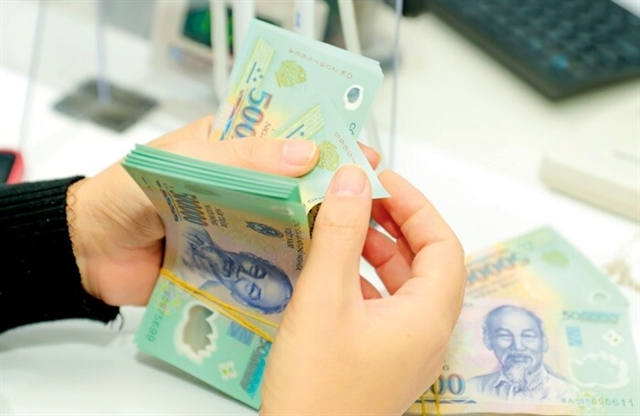
Banks will have to exercise caution to ensure stable liquidity when trillions of Vietnamese dong in savings deposits reach their maturity dates over the next few months, according to experts.
During the period of high interest rates from September to December last year, a large amount of savings was poured into the banking system. According to the statistics from the State Bank of Vietnam (SBV), by the end of December 2022, total deposits at credit institutions amounted to VND11.82 quadrillion. A significant portion of these deposits was in six-month terms and will begin to mature soon.
In addition, the banking system primarily mobilised short-term capital, with about 88 per cent of deposits being of a 12-month term or less. This means that in the near future, there will be more short-term deposits reaching their maturity periods.
Meanwhile, the interest rate for six-month deposits is currently only 5.5 per cent per year at large-sized banks and around 7 per cent per year at smaller-sized banks, which is much lower than last year. The lower interest rates could deter these maturing savings from returning to banks.
On the other hand, recent data from the SBV showed that credit growth is still higher than deposits. Specifically, by mid-May, capital raised by credit institutions exceeded VND12.4 quadrillion, an increase of 2.1 per cent compared to the end of 2022. Meanwhile, outstanding loans of the whole economy surpassed VND12.25 quadrillion, an increase of 2.72 per cent compared to the end of 2022. This data suggests that the liquidity situation of banks is still under pressure, while a large amount of savings from the end of 2022 is about to mature.
Hoang Cong Tuan, chief economist of Military Bank’s Securities Company (MBS), stated that deposit interest rates increased significantly from the end of the fourth quarter of 2022 to the first quarter of 2023, causing banks' net profit margins to narrow. Consequently, banks have recently made numerous moves to lower deposit interest rates. The larger banks have begun to lower the deposit rate to below 7 per cent. In the future, banks will continue to reduce the rate.
Tuan said the SBV recently injected a large amount of money into the banking system through the purchase of US$6 billion, and at the same time it opened up the open market operation (OMO) channel.
Tran Ngoc Bau, general director of financial data provider Wi Group, said the liquidity of the banking system is slightly redundant as the SBV pumped out VND80 trillion through the OMO. It is forecast that the SBV can pump in an additional VND30 trillion.
However, Bau said, the liquidity is only redundant in the short term as total credit in the economy is still higher than deposits. In addition, banks’ bad debts inched up while the bad debt coverage ratio decreased rapidly. Although there have been policies to delay and restructure the debts, the rise of the debts is still putting considerable pressure on banks' liquidity.
Even if the SBV injects more liquidity, banks will tend to protect themselves first by hoarding money instead of boosting lending because the bad debts is increasing while the bad debt coverage ratio is plummeting. The SBV’s policy interest rates may decrease further, but lending rates or deposit rates of commercial banks will decrease more slowly, Bau forecast. — VNS
- Tags
- bank interest rates





